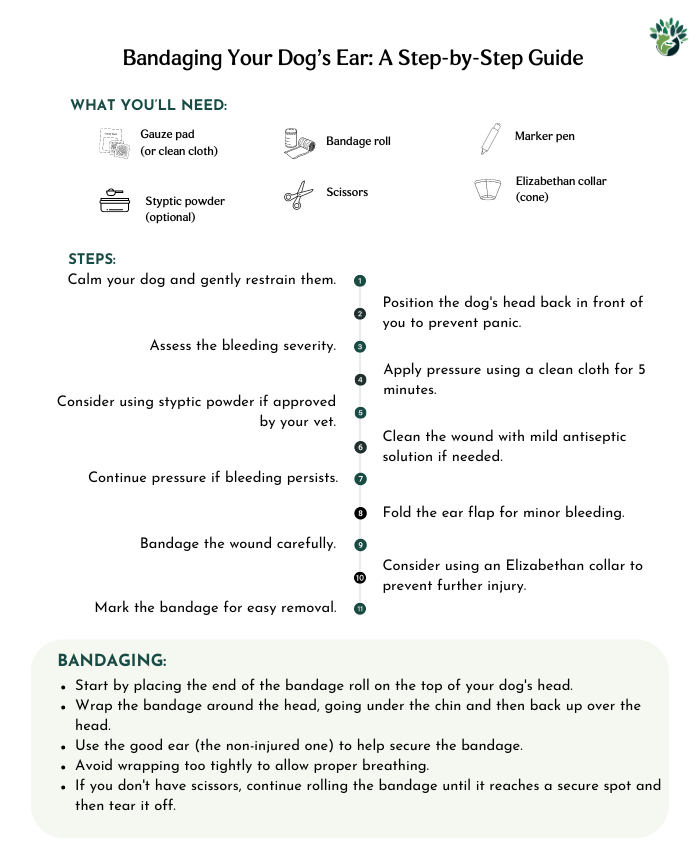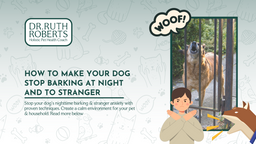A bloody ear can be scary for any dog parent, but it doesn't always mean a mad dash to the emergency vet. This guide will break down everything you need to know about ear bleeding in dogs. We'll cover why it happens, how to stay calm, what you can do at home (if anything!), and when it's time to see the vet. Plus, we'll share some tips to keep your pup's ears healthy and happy from the start.
Why Do Dogs' Ears Bleed?
Ear bleeding in dogs isn't something you see every day, and it can be quite scary. Unlike some injuries, ear bleeding usually indicates a specific underlying issue. Scratches, cuts, or punctures are common culprits. These can happen because your dog is itchy from allergies or an ear infection, leading them to scratch their ears raw. Sometimes, scuffles with other animals or even something stuck in their ear can cause the same problem.
Ear bleeds in dogs can get messy quickly because dogs have many tiny blood vessels, called capillaries, in their ears. These delicate structures can break easily, resulting in a surprising amount of blood. Making matters worse, when a dog's ear hurts, their instinct is to shake their head or scratch at it. This spreads blood everywhere and creates a bigger mess than necessary. As a result, many dog owners find blood splatters on walls, floors, and other surfaces, causing stress for both the owner and their furry friend.
Why You Should Care About Dog Ear Bleeding
Ear bleeds in dogs can look really scary because of all the blood, but they're usually not dangerous. Unlike people who lose a lot of blood, dogs don't typically get dizzy. Even though it might not be life-threatening right away, there are still important reasons why you shouldn't ignore a bloody ear:
- Your pup's in pain: The reason for the bleeding, like an infection or something stuck in their ear, is probably making your dog uncomfortable.
- Infections can creep in: An open wound from bleeding is an open invitation for nasty germs.
- They might make things worse: If your dog's ear is itchy or sore, they'll scratch and shake their head more, which can make the bleeding worse and hurt their ear even more.
- Risk of Chronic Ear Problems and Hearing Impairment: If left untreated, ear problems can develop into chronic ear infection and it will be trickier to fix. Sometimes, a wound or injury can develop into otitis externa (inflammation or infection of the external ear canal) which later causes shrinkage of the ear canal. This skinny passage makes it tough for sound waves to travel through normally. This can make it harder for your dog to hear, or they might hear sounds differently, all muffled or distorted.
How to Stop a Dog’s Ear Bleeding at Home
- Gently restrain your pup in a quiet, well-lit area so you can see the ear clearly.
- See where the bleeding is coming from and how bad it is. Is it a small scratch on the outer flap, or something deeper inside the ear canal? A little blood might be less concerning than a steady stream.
- Here's how to stop minor bleeding on the outside of the ear:
- Grab a clean cloth or gauze pad.
- Press it gently but firmly on the wound for 5 minutes.
- Check every now and then to see if the bleeding has stopped.
- Don't use cotton balls – the fibers can get stuck in the wound.
- If you have a pet first-aid kit, it might contain styptic powder designed to stop bleeding. After applying pressure, sprinkle a small amount on the wound.
- Keep a close eye on your dog and try to keep them calm. Don't let them shake their head or scratch their ears, as this could make the bleeding worse.

When to See the Vet
While the above steps can address minor ear bleeding, seeking veterinary attention is crucial in several situations:
- Heavy or persistent bleeding: If bleeding persists after 10 minutes or seems excessive, see your vet.
- Signs of infection: Redness, swelling, pus, or foul odor from the ear indicate infection.
- Deep wound or foreign object: Let your vet handle deep wounds or lodged foreign objects.
- Unknown cause: Consult your vet if unsure; they can diagnose and advise on treatment.
In emergencies or when immediate vet access isn't possible, knowing basic first aid for ear bleeding is vital. You should learn how to bandage your dog's ear or apply first aid steps, as it may take some time to reach the vet due to traffic or other reasons. Being prepared can make a difference in managing your dog's health until professional help is available.
Final Thought
Dealing with dog ear bleeding requires knowledge, readiness, and quick action. Understanding the causes, spotting the signs, and responding calmly can greatly benefit your dog's health. Although ear bleeding can be distressing, staying composed, evaluating the situation, and taking suitable measures are crucial. Whether you're providing initial aid at home or seeking professional help, being proactive can ease your dog's discomfort and prevent complications. By following the advice in this guide and maintaining routine ear care, you can keep your dog's ears healthy and ensure their well-being in the long run.
Resources
[1] Bajwa J. Canine otitis externa - Treatment and complications. Can Vet J. 2019;60(1):97-99. Available from: https://europepmc.org/backend/ptpmcrender.fcgi?accid=PMC6294027&blobtype=pdf










